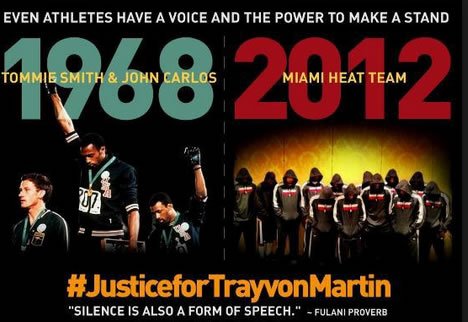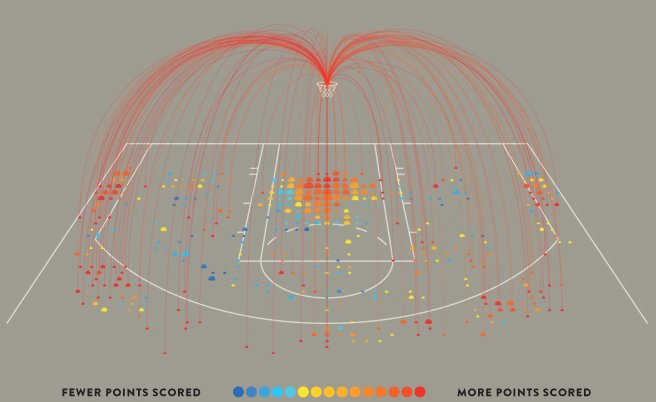Activism & Sports Science
Basketball Activism
Basketball connects with political activism today in campaigns such as the Miami Heat's "Justice for Trayvon Martin." But basketball has been mixed with social justice since its origins. In 1904, Washington D.C. gym teacher Edwin Henderson attended a summer training workshop at Harvard. He brought a new game, basketball, back to D.C. as a civil rights tool to get his black students into college. By 1912, "black five" basketball teams had emerged in many major cities. Integration in the 1950s intersected with the civil rights movement: famous sports figures such as Celtics center Bill Russell and UNC coach Dean Smith took on Jim Crow Laws both on and off the basketball courts. The tradition continues today: Kareem Abdul-Jabbar, famed for scoring more points in NBA history than any player, was recently appointed a cultural ambassador by Hillary Clinton, authored a book for children on black inventors, and has been a galvanizing voice in Time Magazine (and other venues) on racial conflicts in Ferguson and elsewhere.

UNC coach Dean Smith was an innovator in sports activism, using his basketball fame to protest against racism, homophobia, and even nuclear weapons. But he was also an innovator in the use of statistics. A math major in college, as a coach he began collecting the number of points scored per possession, which became the basis for basketball analytics.
A "heat map" such as the image below can reveal hidden patterns. Other sciences used in basketball include ergonomics for determining which muscles need strengthening, histology for injury analysis, and even computer science for creating new measurement tools.
